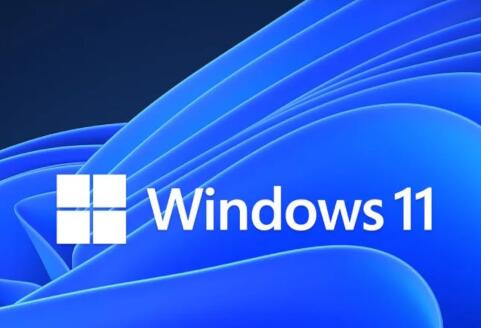Bloatware refers to unnecessary software that comes pre-installed on a device. These programs often include trial versions, demos, and apps that are not required for the primary functions of the operating system. While some bloatware can be easily removed via the settings menu, others might require more advanced techniques.
1. Identifying Bloatware
A. Common Examples of Bloatware:
Trial Software: Antivirus programs, office suites, or media players that come with limited functionality.
Manufacturer Apps: Utilities and software bundled by the device manufacturer.
Unwanted Apps: Games, productivity tools, or educational apps that you don’t use.
B. How to Identify Bloatware:
Review Installed Apps: Go to Settings > Apps > Installed apps to see a list of all installed applications.
Check Startup Programs: Use Task Manager (Ctrl + Shift + Esc) to review programs that start with Windows.
Look for Unusual Behavior: Slow performance, excessive resource usage, or frequent pop-ups can indicate the presence of bloatware.

2. Removing Bloatware via Settings
A. Uninstall Apps:
Open Settings: Press Win + I to open the Settings app.
Navigate to Apps: Click on Apps > Installed apps.
Select the App: Scroll through the list and find the app you wish to remove.
Uninstall: Click on the app and select Uninstall. Follow the prompts to complete the process.
B. Manage Optional Features:
Open Settings: Press Win + I.
Go to Apps: Click Apps > Optional features.
View Installed Features: Review the list and click on features you don’t need.
Uninstall Features: Select the feature and choose Uninstall.
3. Using PowerShell to Remove Built-in Apps
For apps that are pre-installed and can’t be removed via Settings, PowerShell provides a more advanced method.
A. Open PowerShell with Administrative Rights:
Search for PowerShell: Type PowerShell in the Start menu search.
Run as Administrator: Right-click on Windows PowerShell and select Run as administrator.
B. Remove Built-in Apps:
List Installed Apps:
powershell
复制代码
Get-AppxPackage | Select Name, PackageFullName
Remove Specific Apps:
powershell
复制代码
Remove-AppxPackage
Replace with the actual package name from the list.
C. Remove Built-in Apps for All Users:
powershell
复制代码
Get-AppxPackage -AllUsers | Remove-AppxPackage
Caution: Removing certain built-in apps can affect system functionality, so proceed with care and research each app before removal.
4. Using Third-Party Tools
Several third-party tools can help manage and remove bloatware more easily:
**A. CCleaner:
Download and Install: Visit the CCleaner website and download the software.
Run CCleaner: Open CCleaner and navigate to the Tools section.
Uninstall Programs: Use the Uninstall tab to remove unwanted applications.
**B. O&O AppBuster:
Download and Install: Get it from the O&O Software website.
Run AppBuster: Open the application to see a list of installed apps.
Remove Apps: Check the boxes for apps you want to remove and click Uninstall.
**C. Revo Uninstaller:
Download and Install: Visit the Revo Uninstaller website and get the software.
Run Revo Uninstaller: Open it and choose the program you wish to remove.
Uninstall and Clean Residual Files: Follow the prompts to remove the program and clean up any leftover files.
5. Disabling Unwanted Startup Programs
To prevent bloatware from impacting your system’s startup:
A. Open Task Manager:
Access Task Manager: Press Ctrl + Shift + Esc.
Navigate to Startup Tab: Click on the Startup tab to see programs that launch at startup.
B. Disable Unnecessary Programs:
Select Program: Click on the program you wish to disable.
Disable: Click Disable to prevent it from running at startup.
6. Customizing Windows Features
A. Adjust Windows Features:
Open Control Panel: Press Win + R, type control, and hit Enter.
Navigate to Programs and Features: Click on Programs > Turn Windows features on or off.
Uncheck Unwanted Features: Review the list and uncheck features you don’t need.
B. Manage Notifications and Background Apps:
Open Settings: Press Win + I.
Go to Privacy & Security: Click on Privacy & security > Background apps.
Turn Off Background Apps: Toggle off apps you don’t want running in the background.
7. Keeping Your System Clean
A. Regular Maintenance:
Perform Disk Cleanup: Open Disk Cleanup from the Start menu and follow the prompts to clean temporary files and system cache.
Run Antivirus Scans: Ensure your system is protected from malware that can often masquerade as bloatware.
B. Update Regularly:
Check for Updates: Go to Settings > Update & Security > Windows Update to ensure your system is up-to-date with the latest security patches and feature updates.
C. Create System Backups:
Backup Regularly: Use Backup and Restore or a third-party backup solution to create regular backups of your system.
About us and this blog
Panda Assistant is built on the latest data recovery algorithms, ensuring that no file is too damaged, too lost, or too corrupted to be recovered.
Request a free quote
We believe that data recovery shouldn’t be a daunting task. That’s why we’ve designed Panda Assistant to be as easy to use as it is powerful. With a few clicks, you can initiate a scan, preview recoverable files, and restore your data all within a matter of minutes.
Subscribe to our newsletter!
More from our blog
See all postsRecent Posts
- How to recover a deleted slide in powerpoint? 2025-02-27
- How to recover deleted capcut videos? 2025-02-27
- How to recover a file deleted from a shared drive? 2025-02-27










